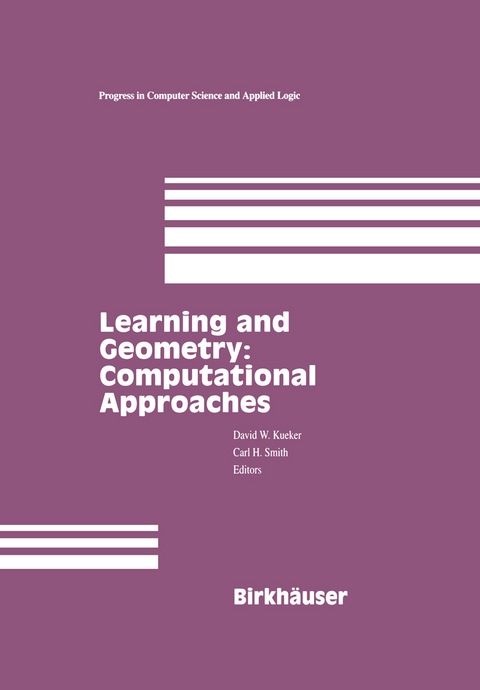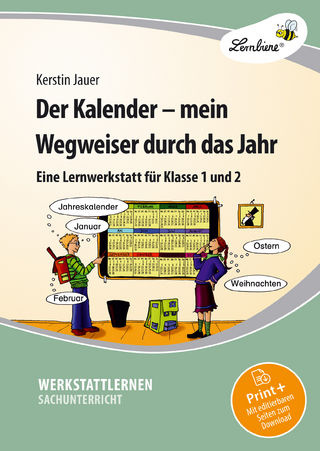
Learning and Geometry: Computational Approaches
Seiten
2011
|
Softcover reprint of the original 1st ed. 1996
Springer-Verlag New York Inc.
978-1-4612-8646-2 (ISBN)
Springer-Verlag New York Inc.
978-1-4612-8646-2 (ISBN)
The field of computational learning theory arose out of the desire to for mally understand the process of learning. Scholars in both fields came together to learn about each others' field and to look for common ground, with the ultimate goal of providing a new model of learning from geometrical examples that would be useful in computer vision.
The field of computational learning theory arose out of the desire to for mally understand the process of learning. As potential applications to artificial intelligence became apparent, the new field grew rapidly. The learning of geo metric objects became a natural area of study. The possibility of using learning techniques to compensate for unsolvability provided an attraction for individ uals with an immediate need to solve such difficult problems. Researchers at the Center for Night Vision were interested in solving the problem of interpreting data produced by a variety of sensors. Current vision techniques, which have a strong geometric component, can be used to extract features. However, these techniques fall short of useful recognition of the sensed objects. One potential solution is to incorporate learning techniques into the geometric manipulation of sensor data. As a first step toward realizing such a solution, the Systems Research Center at the University of Maryland, in conjunction with the Center for Night Vision, hosted a Workshop on Learning and Geometry in January of 1991. Scholars in both fields came together to learn about each others' field and to look for common ground, with the ultimate goal of providing a new model of learning from geometrical examples that would be useful in computer vision. The papers in the volume are a partial record of that meeting.
The field of computational learning theory arose out of the desire to for mally understand the process of learning. As potential applications to artificial intelligence became apparent, the new field grew rapidly. The learning of geo metric objects became a natural area of study. The possibility of using learning techniques to compensate for unsolvability provided an attraction for individ uals with an immediate need to solve such difficult problems. Researchers at the Center for Night Vision were interested in solving the problem of interpreting data produced by a variety of sensors. Current vision techniques, which have a strong geometric component, can be used to extract features. However, these techniques fall short of useful recognition of the sensed objects. One potential solution is to incorporate learning techniques into the geometric manipulation of sensor data. As a first step toward realizing such a solution, the Systems Research Center at the University of Maryland, in conjunction with the Center for Night Vision, hosted a Workshop on Learning and Geometry in January of 1991. Scholars in both fields came together to learn about each others' field and to look for common ground, with the ultimate goal of providing a new model of learning from geometrical examples that would be useful in computer vision. The papers in the volume are a partial record of that meeting.
Learning.- MDL Learning.- PAC Learning, Noise and Geometry.- A Review of Some Extensions to the PAC Learning Model.- Geometry.- Finite Point Sets and Oriented Matroids: Combinatorics in Geometry.- A Survey of Geometric Reasoning Using Algebraic Methods.- Synthetic versus Analytic Geometry for Computers.- Representing Geometric Configurations.- Geometry Theorem Proving in Euclidean, Decartesian, Hilbertian and Computerwise Fashion.
| Reihe/Serie | Progress in Computer Science and Applied Logic ; 14 |
|---|---|
| Zusatzinfo | XIV, 212 p. |
| Verlagsort | New York, NY |
| Sprache | englisch |
| Maße | 178 x 254 mm |
| Themenwelt | Schulbuch / Wörterbuch ► Unterrichtsvorbereitung ► Unterrichts-Handreichungen |
| Mathematik / Informatik ► Informatik ► Theorie / Studium | |
| Mathematik / Informatik ► Mathematik ► Allgemeines / Lexika | |
| Mathematik / Informatik ► Mathematik ► Analysis | |
| Mathematik / Informatik ► Mathematik ► Angewandte Mathematik | |
| Mathematik / Informatik ► Mathematik ► Geometrie / Topologie | |
| Sozialwissenschaften ► Pädagogik | |
| ISBN-10 | 1-4612-8646-8 / 1461286468 |
| ISBN-13 | 978-1-4612-8646-2 / 9781461286462 |
| Zustand | Neuware |
| Haben Sie eine Frage zum Produkt? |
Mehr entdecken
aus dem Bereich
aus dem Bereich
Grundwissen für Zahntechniker, Band 2
Buch | Softcover (2022)
Neuer Merkur (Verlag)
44,00 €
die Zusammenfassung
Buch | Softcover (2023)
Fachwirteverlag
24,80 €
eine Lernwerkstatt für Klasse 1 und 2
Buch (2023)
Lernbiene (Verlag)
25,90 €


